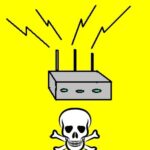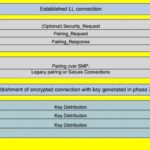New RFFE modules are designed for Bluetooth, Wi-Fi 6E, and the next-generation standard, Wi-Fi 7. The modules are designed for a wide array of device segments beyond smartphones – including automotive, XR, PCs, wearables, mobile broadband, IoT, and more.
“With Qualcomm Technologies’ new products, we are extending our RFFE leadership into automotive and IoT, helping OEMs address their massive industry-specific challenges like development cost  and scalability,” said Christian Block, senior vice president and general manager, RFFE, QUALCOMM Germany RFFE GmbH. “OEMs using our solutions can design products with higher performance, longer battery life and reduced commercialization time, ultimately accelerating the pace of innovation and delivering improved experiences to consumers.”
and scalability,” said Christian Block, senior vice president and general manager, RFFE, QUALCOMM Germany RFFE GmbH. “OEMs using our solutions can design products with higher performance, longer battery life and reduced commercialization time, ultimately accelerating the pace of innovation and delivering improved experiences to consumers.”
In fiscal year 2021, Qualcomm Technologies reached the #1 position in RFFE revenues for handsets. The introduction of the new RFFE modules aligns with the Company strategy to extend handset leadership with modem-to-antenna solutions into automotive and IoT – positioning Qualcomm Technologies to be a global RFFE revenue leader across various industries. Today, most the 5G automotive, 5G fixed wireless access CPEs (customer premise equipment) and 5G PC devices announced or in development using Qualcomm Technologies’ connectivity chips include RFFE content from the Company. In addition, Qualcomm® RFFE is increasingly being adopted in consumer IoT devices, such as wearables.
Wi-Fi RFFE modules bring together key components required between the Wi-Fi baseband chip and antennas to amplify and adapt signals for optimal wireless transmission. Manufacturers use these modules to quickly and cost-effectively develop Wi-Fi client devices. The new modules announced today feature 5G/Wi-Fi coexistence capabilities, and complement Qualcomm® ultraBAW filters to allow 5G/Wi-Fi concurrency, enhancing wireless performance in cellular devices.
Manufacturers can use the new modules along with Qualcomm Technologies’ client connectivity products, such as Qualcomm FastConnect 7800 Wi-Fi 7/Bluetooth Systems and Snapdragon 5G Modem-RF Systems – for cutting-edge wireless such as those devices featuring Snapdragon Connect. Or they can use 3rd party Wi-Fi and Bluetooth chipsets along with the modules.
Qualcomm Technologies Inc., 5775 Morehouse Drive, San Diego, CA 92121-1714, www.qualcomm.com




